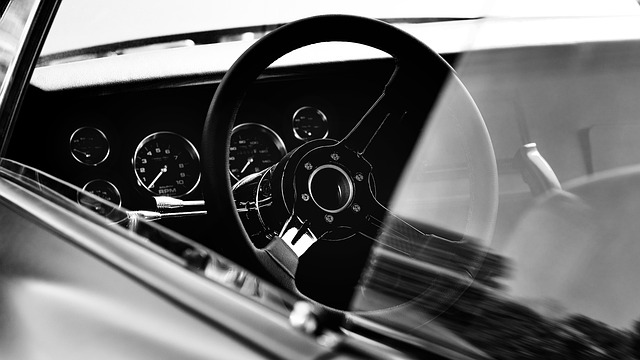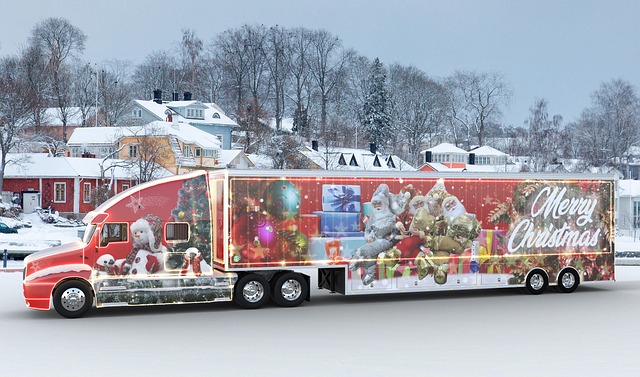Looking to register your car in California? This comprehensive guide walks you through the entire process, from understanding eligibility requirements to completing the DMV VIN verification. We’ll break down the necessary documents, step-by-step instructions for verification, and how to pay fees either online or in-person. By following these steps, you’ll be on your way to securing your California vehicle registration efficiently.
- Understand Eligibility Requirements for Car Registration in California
- Gather Necessary Documents for Vehicle Registration
- Perform DMV VIN Verification Step-by-Step
- Complete Online or In-Person Registration Process
- Pay California Vehicle Registration Fees and Get Your License Plate
Understand Eligibility Requirements for Car Registration in California

Before you start the registration process, it’s crucial to understand the eligibility requirements for car registration in California. Your vehicle must meet certain criteria set by the Department of Motor Vehicles (DMV). First, ensure your car is legally imported and complies with all safety standards. The DMV conducts a Vehicle Identification Number (VIN) verification process, known as dmv vin verification, to cross-check your car’s details against their records. This includes checking if the VIN is legitimate and matching it with the vehicle’s make, model, year, and other specifications.
Additionally, you’ll need proof of ownership, a valid driver’s license, and current insurance. A mobile vin inspection or mobile vin verification service can streamline this process by allowing a professional to conduct the necessary checks remotely, providing convenience and potential time savings. This is particularly useful if your vehicle has unique attributes that might require specialized knowledge for accurate dmv vin verification.
Gather Necessary Documents for Vehicle Registration

Before you start the registration process, it’s crucial to gather all the essential documents for vehicle registration in California. The key document you need is the Vehicle Identification Number (VIN) verification report. This can be obtained through a dmv vin verification or by using a mobile vin verifier. Ensure your vehicle’s title, which should bear the name of the current owner, is also ready. A valid driver’s license and proof of insurance are other mandatory documents you’ll need during the registration process.
Additionally, prepare any out-of-state registration documents if you’ve recently purchased a car from another state, as well as proof of vehicle inspection (if applicable). Some counties in California might also require additional forms or fees, so it’s wise to check with your local dmv branch for specific requirements. A vin inspection can help ensure the accuracy of the VIN data and is often a straightforward process facilitated by mobile vin verification services.
Perform DMV VIN Verification Step-by-Step

To begin the DMV VIN verification process, start by gathering all necessary documents for your vehicle. This includes registration papers, proof of insurance, and a valid driver’s license. Once ready, visit the California Department of Motor Vehicles (DMV) website to access their online services or schedule an in-person appointment at a local DMV office. If you prefer a more convenient option, consider using a mobile vin verifier for a quick and efficient check.
During the verification, you’ll need to provide your vehicle’s unique Identification Number (VIN). This 17-character code can be found on the vehicle’s registration documents or near the dashboard. A mobile vin inspection app can assist in this step by scanning the VIN from a plate or label, making the process even simpler. After entering the VIN, the DMV system will cross-reference it with their records to ensure the vehicle’s details match and there are no outstanding issues or recalls.
Complete Online or In-Person Registration Process

In California, registering your car involves either a fully online or in-person process, depending on your preference and circumstances. The first step is to gather all necessary documents, including proof of ownership, vehicle identification number (VIN) inspection, and valid identification. For a seamless experience, you can start the registration online through the California Department of Motor Vehicles (DMV) website. Here, you’ll input your VIN for a DMV vin verification, upload required documents, and complete the application form. Alternatively, you can opt for an in-person visit to a local DMV office, where a mobile vin verifier may be used for on-site VIN inspection as part of the registration process.
Whichever method you choose, ensure that all information is accurate and up-to-date. After submission, you’ll typically receive your registration documents in the mail within a few weeks. It’s crucial to review these carefully upon receipt, as any discrepancies must be addressed promptly to avoid delays or further issues with your vehicle’s registration.
Pay California Vehicle Registration Fees and Get Your License Plate

After completing your vehicle’s registration application at the California DMV, it’s time to pay the necessary fees and obtain your license plate. The state requires all vehicle owners to pay a registration fee based on their car’s value and type. You can typically make this payment online or in person at any DMV field office. Once your payment is processed, you’ll receive your official Vehicle Registration and will be able to choose your preferred license plate design (if not already selected during the initial application).
To streamline this process, many Californians opt for a mobile vin inspection service, allowing them to verify their vehicle’s identity and title, and even obtain their license plate on the same day. A mobile vin verifier can perform a quick and accurate dmv vin verification right at your location, saving you the hassle of visiting a DMV branch. This modern approach ensures that registering your car in California is efficient and convenient for all residents.
Registering a car in California is a straightforward process that requires understanding the eligibility criteria, gathering essential documents, and completing either an online or in-person registration. One crucial step is the DMV VIN verification, ensuring your vehicle’s authenticity. After fulfilling all requirements, including payment of fees and obtaining license plates, you’ll be legally registered to drive on California’s roads.



